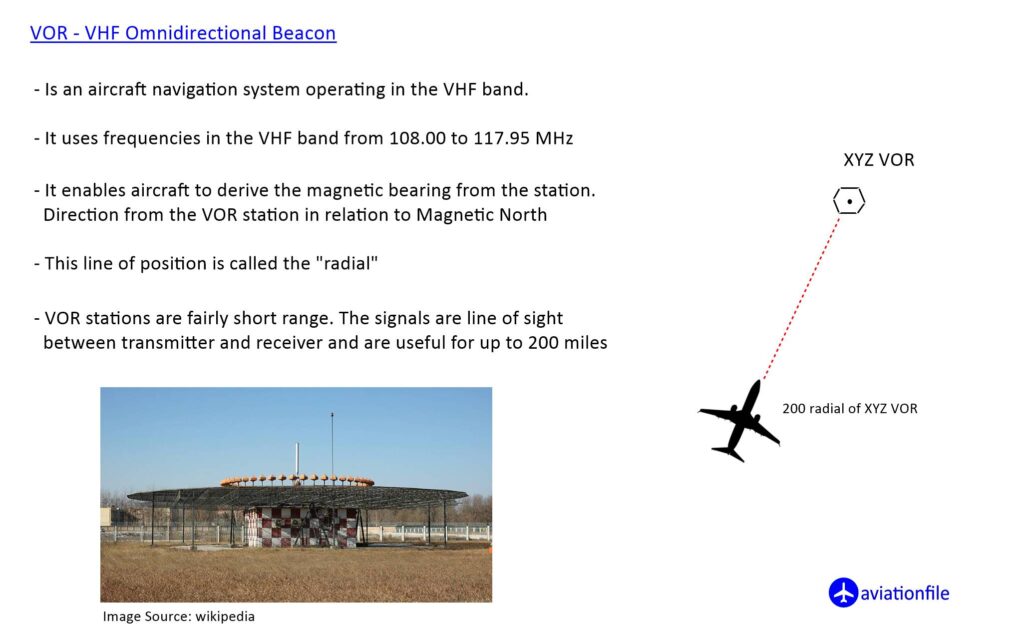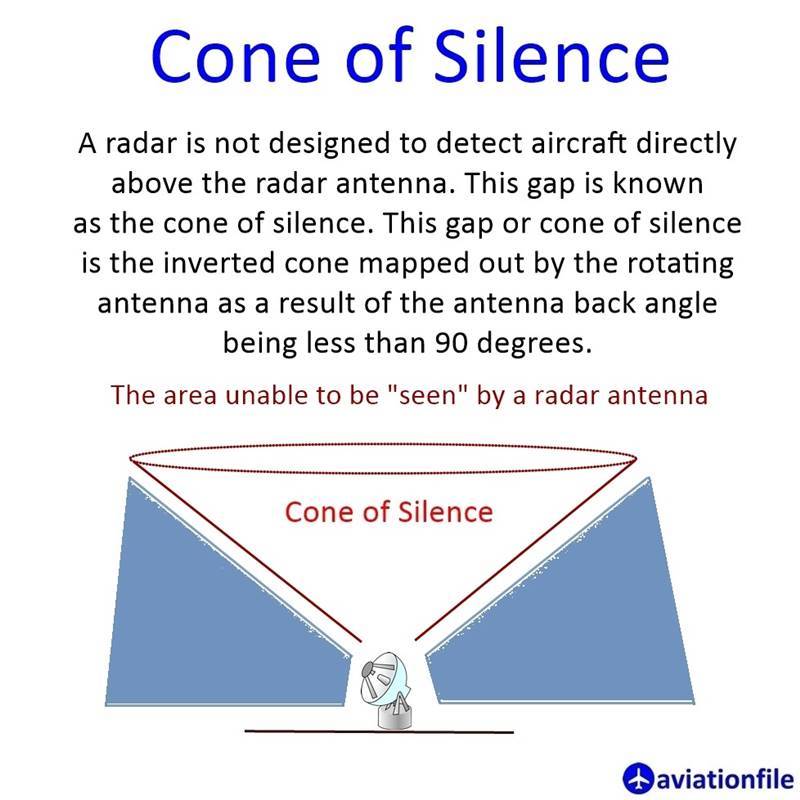What is VOR ? VHF Omni-Directional Radio Range
Empowering pilots with direction: Imagine flying through the clouds, unsure of your exact position. That’s where VOR steps in, using radio signals to guide you. This air navigation marvel, aptly named the VHF Omni-directional Radio Range, shines in the avionics systems category.
Unraveling direction through radio magic: VOR works its magic by comparing phases of ground-broadcasted signals. IT reveals your direction from the station like a secret whisper in the sky.
VOR Working Principle
The VOR operates in the 108 – 117.95 MHz band with 50 kHz channel steps. The ground station emits an electromagnetic pattern of 30 cycles/second. This signal generates a 30 Hz sinusoidal wave at the VOR receiver on the aircraft.
The ground station also broadcasts an FM modulated signal into space on a 30 Hz reference mark in all directions. The phase difference between the two aforementioned 30 Hz signals gives the angle of the aircraft relative to the ground station.
The VOR system works with the Line of Sight (LoS) principle due to the characteristic of the VHF band, in other words, there should be no obstacle between the VOR station and the air platform, and they should be in direct sight of each other.
VOR devices are mostly used together with the DME (VOR/DME). DME indicates the distance to the station, and the frequency selected for the VOR is also connected to the DME station. Thus, both radial tracking and distance information are provided.

VOR General Information
All VOR stations make it easy to navigate! They use 000 degrees as their north reference, giving you precise magnetic bearing information (radials) through your HSI or CDI instruments. Whether you want to know your location relative to the station (like being due east on the 090 radial). Or the exact heading to reach it, these handy devices have you covered!
TO and FROM information
An aircraft can be located in one of two sectors. These sectors are relative to a selected VOR radial and the ground station.
FROM: If the aircraft is within the selected radial +/- 90 degree area, it is in the FROM (from station) sector.
TO: The aircraft is in the TO (to station) sector if it is “not” within the selected radial +/- 90 degree area.
For example, if 110 radial is selected in the device on the aircraft -regardless of the head of the aircraft- when the aircraft is within the sector from 020 degrees to 200 degrees according to the station, FROM is read on the display, otherwise the phrase TO is read. VOR information is independent of the direction and the position of the CDI and TO/FROM information do not change regardless of the head of the aircraft.
When an aircraft passes over the VOR station, it cannot receive reliable information, or the received information becomes untrustworthy. This area around the VOR station is known as the cone of silence. While in this region, the device displays the FLAG indicator, signaling that the information is either unavailable or unreliable, instead of the TO/FROM indicator. Once the aircraft passes the station and the sector changes, the TO indicator switches to FROM, and the FROM indicator changes back to TO.

Further Reading Links:
- Federal Aviation Administration (FAA): https://www.faa.gov/about/office_org/headquarters_offices/ato/service_units/techops/navservices/gnss/nas/procedures/gps_overlay
- Aircraft Communications Addressing and Reporting System (ACARS): https://skybrary.aero/articles/aircraft-communications-addressing-and-reporting-system
- Jeppesen Sanderson: Understanding VOR Navigation: https://www.youtube.com/watch?v=4_h-Nh_iJDQ
- Skybrary: https://skybrary.aero/articles/vhf-omnidirectional-radio-range-vor
- Sporty’s Pilot Shop: https://www.youtube.com/watch?v=6R8ziADLO8Q



